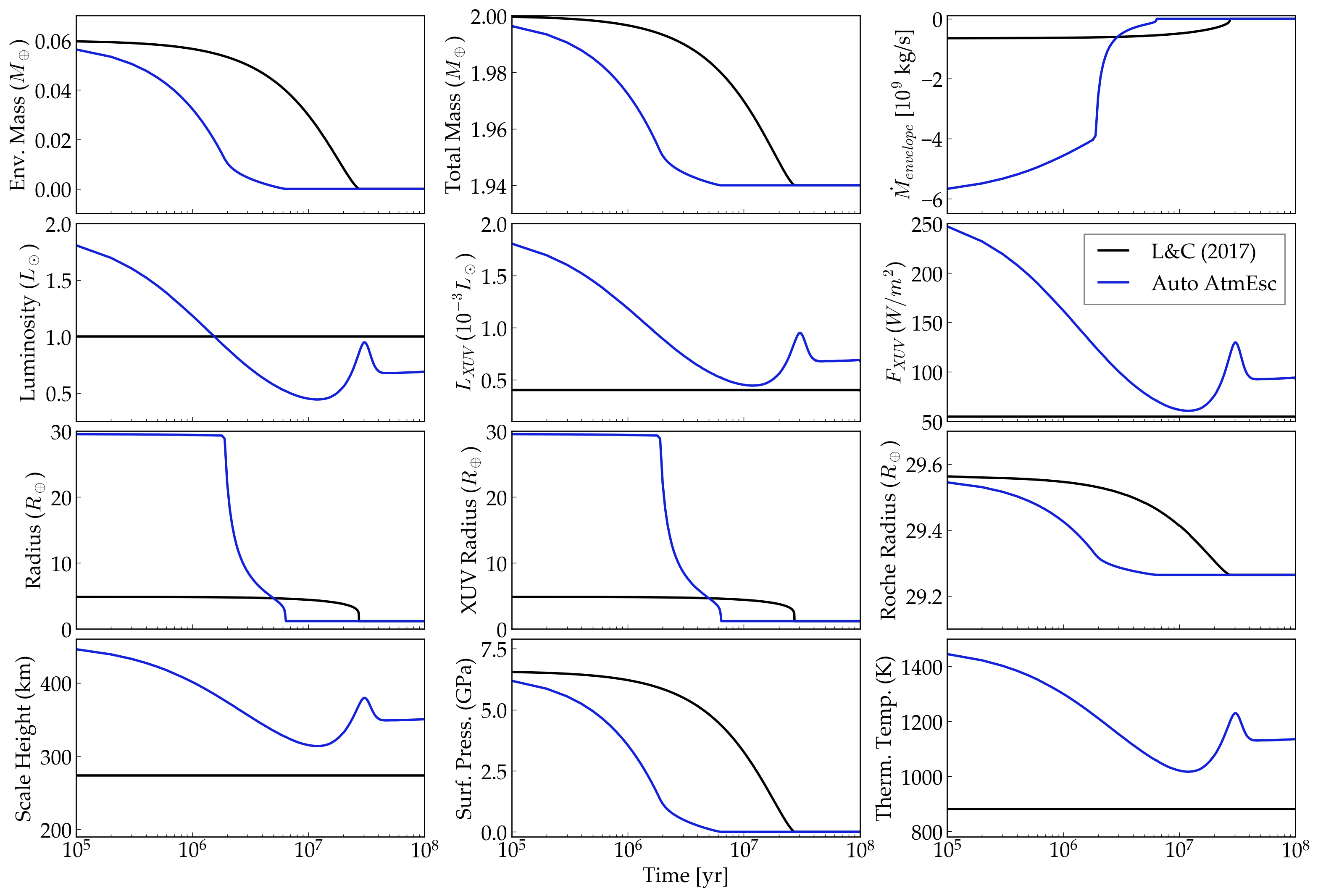Atmospheric Erosion of Mini-Neptunes with the Lehmer & Catling (2017) Model
Overview
This examples compares the atmospheric erosion of two “mini-Neptunes” using the H envelope model from Lehmer & Catling (2017).
Date |
10/15/2019 |
Author |
Rory Barnes, Diego McDonald |
Modules |
AtmEsc STELLAR |
Approx. runtime |
10 seconds |
To run this example
python makeplot.py <pdf | png>
Expected output

Evolution of the H envelope mass (top left), total planet mass (top center), time derivative of the envelope mass (top right), stellar luminosity (upper middle left), XUV luminosity (upper middle center), incident XUV flux (upper middle left), planet radius (lower middle left), XUV radius (lower middle center), Roche lobe radius (lower middle right), envelope scale height (bottom left), surface pressure (bottom center), and the envelope’s temperature (bottom right). In both cases, the envelope follows the planetary radius model of Lehmer & Catling (2017). The black line assumes constant luminosity, thermal temperature, incident flux, and assumes the planet loses mass via energy limited escape; this case reproduces Fig. 3 in Lehmer & Catling (2017). The blue curve includes stellar evolution, assumes the thermal temperature responds to the evolving radiation field, and that the escape can transition between radiation-recombination-limited escape and energy-limited escape, i.e. bAtmEscAuto is set to 1. For this latter case, the radius model predicts the initial radius exceeds the Roche limit, and so VPLanet forces all the mass to be contained within that radius and forces the radius to equal the Roche radius.